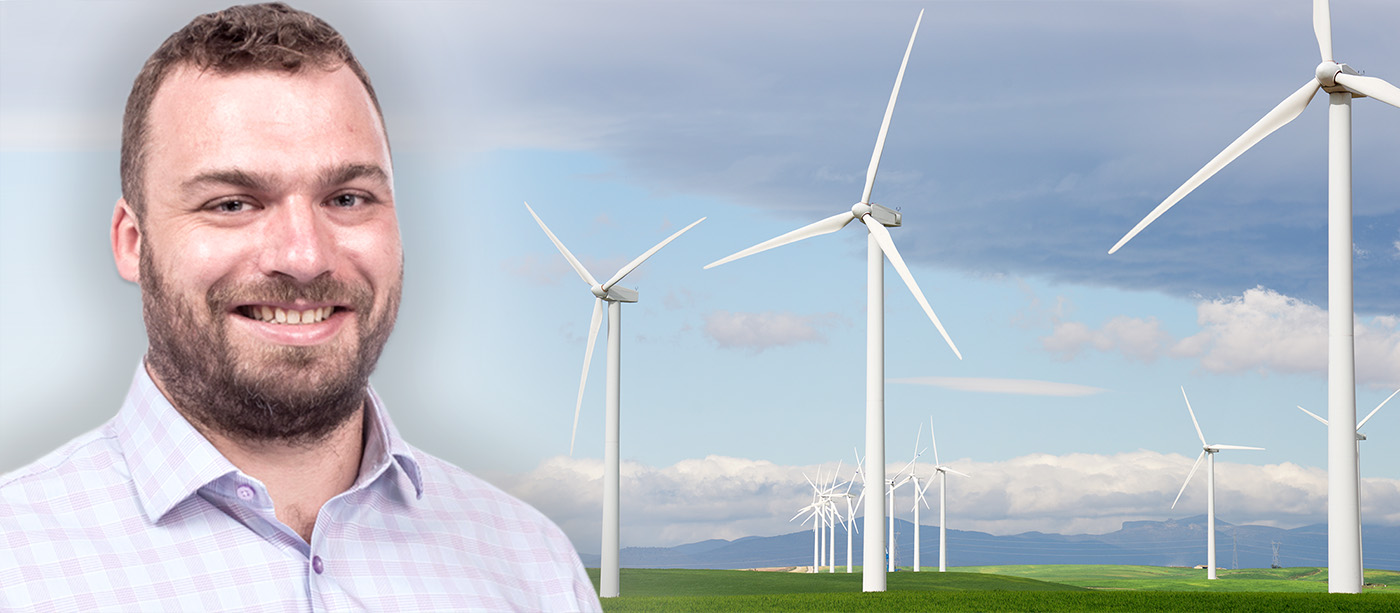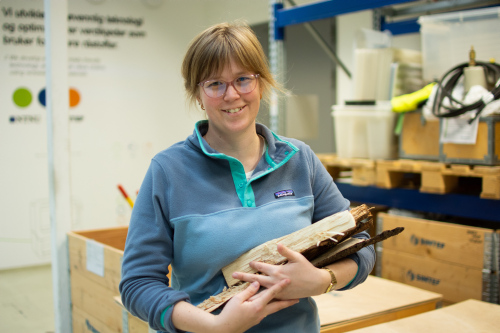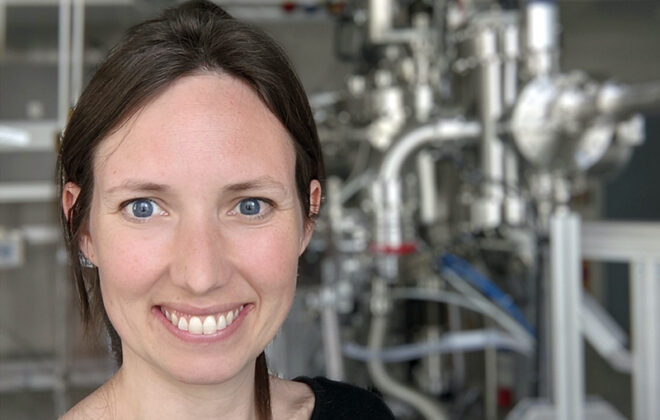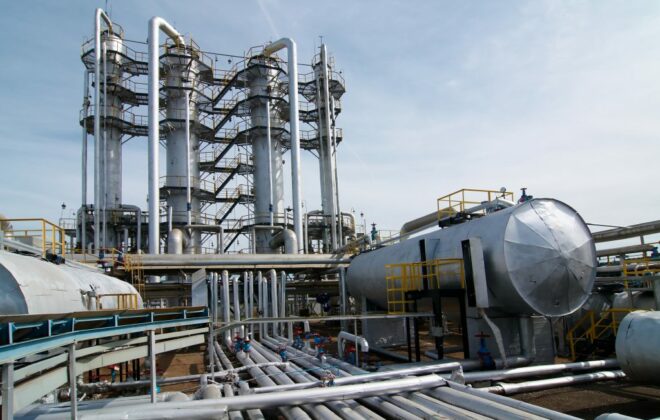“Tries, (energy) conversions, and goals”: Q&A with Jacob Joseph Lamb
Jacob Lamb is an associate professor in sustainable energy systems in the Department of Energy and Process Engineering at NTNU. His research is focused on environmentally friendly energy storage technologies.
Here he talks to John de Mello, Director of NTNU Nano, about life, research, and potential solutions to the climate crisis.
What’s your role at NTNU?
I’m one of the three thematic leaders for a strategic initiative called “ENERSENSE” which aims to improve energy efficiency and energy storage technologies through “digitalization” of energy systems. In practice, that means we aim to use sensors, automation, and artificial intelligence to improve the performance of energy systems. I’m also the leader of the Renewable Energy Bachelor course (BIFOREN), which has an annual intake of around ninety students spread across NTNU’s three campuses.
Can you sum up your research in one sentence?
I’m interested in the “digital characterization of energy systems”, combining sensor technologies and digital twin techniques to gain insight into how energy systems work and how they can be improved.
What do you mean by “digital twin”?
A digital twin is a virtual model that describes a real physical object. In our case that means a computer simulation that mimics the behaviour of an energy system such as a battery. We equip the real battery with a panel of sensors to map out things like the temperature inside the battery, and we then try to replicate the observed behaviour in the digital twin to gain insight into what’s happening inside the real battery. The twin allows us to learn about processes taking place inside the battery that we can’t probe experimentally – or at least not directly. By playing around with the structure of the digital twin, we can identify design changes that will improve the simulated performance. And, if our model is reliable, we can then implement those same changes on the real battery to enhance its performance.
What are you looking forward to in the coming year?
I’ve been fortunate to co-supervise a few PhD students in the past, but this year I’ll take on my first student as main supervisor, and have the chance to oversee a complete PhD project from start to finish. I have a few grant applications under review right now and, if one or two of those are successful, I’m hoping to start some new projects and take on a few more people later this year. I’m also looking forward to completing a new book I’m writing called “Engineering Energy Storage Systems”, which should hopefully be out early next year.
What’s the biggest challenge in your field?
There are lots of them! But close to the top of the list is the need to increase the energy density of batteries, i.e. the amount of energy stored per kilogram. If we really want to phase out fossil fuels, we need to shift from oil-based transportation to electric transportation. This is starting to happen for road vehicles, but for large ships and aircraft the weight of the batteries needed is just too high to be viable. (There’s an animation on the Guardian newspaper website that nicely illustrates the problem). Energy densities need to increase by at least a factor of ten before electric shipping and aviation become practical, and that means we need to move away from today’s Li-ion battery technology to something new.
So where does your research fit in?
My research is about designing batteries that combine high storage capacity with high power delivery. To increase the storage capacity, you typically need to increase the thickness of the electrodes, which has the unwanted side-effect of slowing down the kinetics and reducing the power output. That´s the trade-off! To get high storage capacity and high power at the same time, we need a much better understanding of how the structure and nanostructure of the cells influences their performance, and that´s where my research comes in.
What do you most enjoy about your work?
The intellectual challenge of doing research – setting a hypothesis and testing it out. I love working in the lab, but I don’t get to do it as much as I would like – once a week if I’m lucky. I enjoy teaching and especially giving lectures, which can be a lot of fun if you manage to get the students properly engaged.
What motivates your work?
I want to help find solutions to the biggest problem faced by society today, global warming. Ecosystems that have developed over hundreds of thousands of years are – as a direct result of human activity – changing in front of our eyes. What will this mean for food-chains, biodiversity, and food production in the coming years? We don’t yet know, and we can’t afford to find out. Renewable energy offers a viable alternative to fossil fuels, but the intermittency of production is a major challenge. We can’t control when the wind blows or the sun shines, which means we can’t match renewable energy production to our energy needs. The only way to make renewable energy useful is to have effective energy storage solutions that allow energy to be used when it’s needed instead of when it’s generated.
What do you do in your spare time?
I have a dog so I spend a fair amount of time outdoors. I hike a lot in the summer and ski a lot in the winter, so you could say I’ve adapted to the Norwegian lifestyle pretty well! I did my master’s project on photosynthesis, and ever since then I’ve had a soft spot for gardening.
Where did you grow up?
I come from a small city called Dunedin on the South Island of New Zealand, which sprang up during the “Otago gold-rush” of the 1860s. It’s a University city with a population of around 140,000 – quite similar to Trondheim in many ways. Except for the climate, which is a lot milder – a bit like Normandy in France.
What would you have done if you hadn’t become a scientist?
I played Rugby to a fairly high level when I was in New Zealand, and was teammates with a few people that ended up playing for the All Blacks – that would have been fun! But being a rugby player is a tough career choice, and your shelf life as a professional player is short: you retire in your thirties with most of your working life ahead of you. In academia, you’re still called an Early Career Researcher when you’re forty!
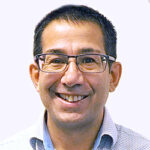
John de Mello
John de Mello is the Head of NTNU Nano. He is also a professor at the Department of Chemistry.
Search
Søk
Categories
- Arctic Research
- Arkitektur
- Bærekraft
- Bioingeniørfag
- Biologi
- Biology
- Biomedical Laboratory Science
- Biotechnology
- Bioteknologi
- Chemical Engineering
- Chemistry
- Climate
- Computer Science
- Datateknologi
- Digital
- Elektronikk
- Energi
- Energi
- Energy
- Engineering
- Engineering
- Environment
- Food Science
- Forskning
- Fysikk
- Fysikk
- Havbruk
- Informasjonsteknologi
- Informasjonsteknologi
- Ingeniørvitenskap
- Kjemi
- Kjemisk prosessteknologi
- Kjemisk prosessteknologi
- Kreftbehandling
- Kybernetikk
- Marine Technology
- Materialer
- Materials Science
- Materialteknologi
- Matvitenskap
- Meninger
- Miljø
- Min ph.d.
- My PhD
- My PhD
- My postdoc
- Nanotechnology
- Nanoteknologi
- Ocean
- Oil and gas
- Physics
- Research
- Simulering og visualisering
- Spør en forsker
- Studentliv
- Sustainability
- Ukategorisert
- Universitetsliv
- University Life
Kategorier
- Arctic Research
- Arkitektur
- Bærekraft
- Bioingeniørfag
- Biologi
- Biology
- Biomedical Laboratory Science
- Biotechnology
- Bioteknologi
- Chemical Engineering
- Chemistry
- Climate
- Computer Science
- Datateknologi
- Digital
- Elektronikk
- Energi
- Energi
- Energy
- Engineering
- Engineering
- Environment
- Food Science
- Forskning
- Fysikk
- Fysikk
- Havbruk
- Informasjonsteknologi
- Informasjonsteknologi
- Ingeniørvitenskap
- Kjemi
- Kjemisk prosessteknologi
- Kjemisk prosessteknologi
- Kreftbehandling
- Kybernetikk
- Marine Technology
- Materialer
- Materials Science
- Materialteknologi
- Matvitenskap
- Meninger
- Miljø
- Min ph.d.
- My PhD
- My PhD
- My postdoc
- Nanotechnology
- Nanoteknologi
- Ocean
- Oil and gas
- Physics
- Research
- Simulering og visualisering
- Spør en forsker
- Studentliv
- Sustainability
- Ukategorisert
- Universitetsliv
- University Life

